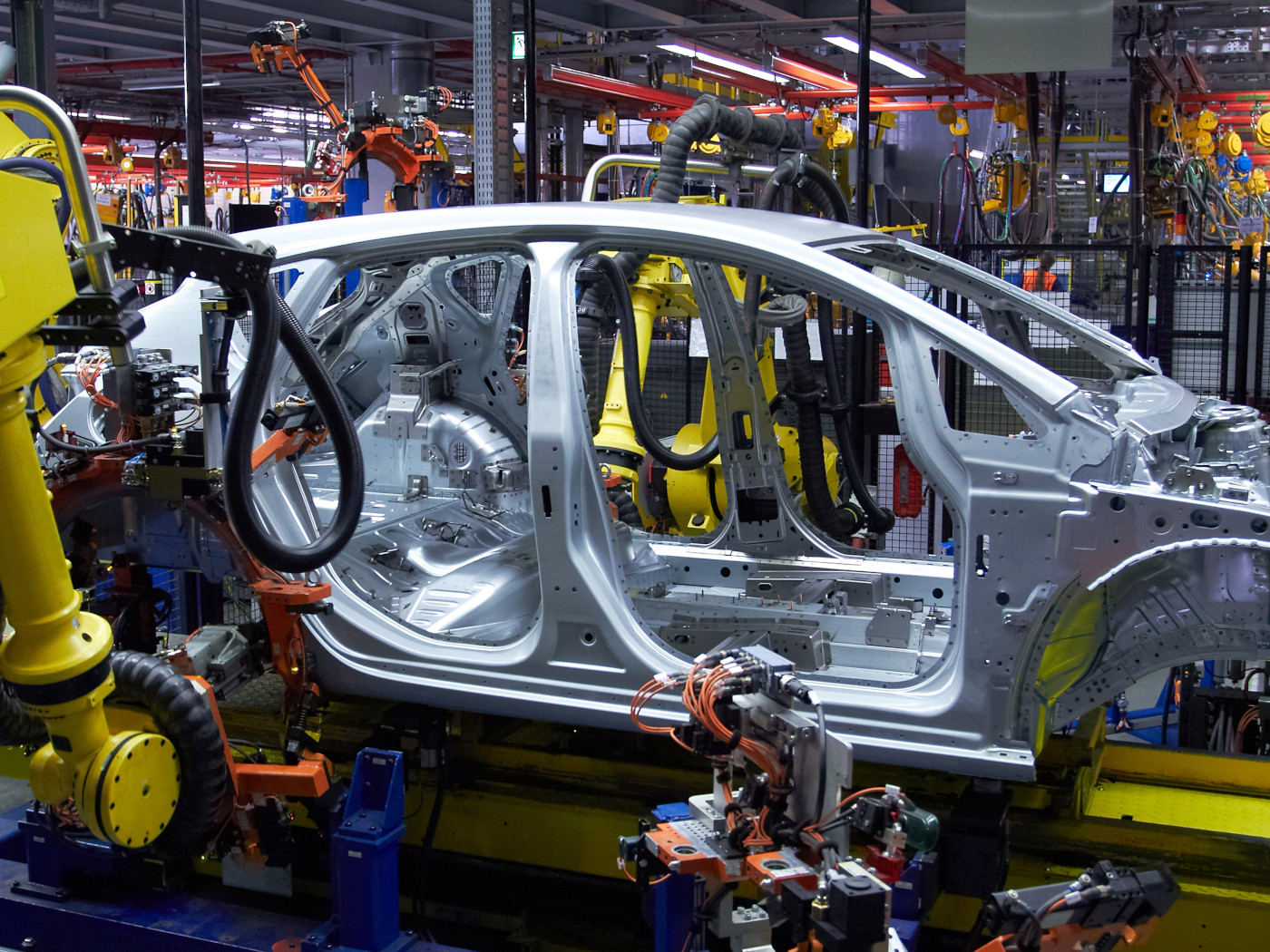The European Union has consistently exported more goods to the United States than it has imported. In 2023 the U.S. goods trade deficit stood at 155.8 billion euros ($161.6 billion), according to Eurostat data. Overall, this is one of the world’s most important trading relationships: in 2023 the United States was the largest partner for EU exports of goods (19.7%) and the second largest partner for EU imports of goods (13.7%). The United States is even the largest trading partner for smaller EU countries such as Austria.
In terms of categories, the EU is highly dependent on imports of oil and gas and other sources of energy from the United States, together with food and drink and raw materials, but has a huge surplus in categories such as machinery and vehicles, chemicals, medicines and pharmaceuticals, and other manufactured goods.
Taken overall, the United States is the largest goods importer in the world. U.S. goods imports from the world totaled $3.2 trillion in 2022, up 14.6 percent ($0.41 trillion) from 2021. China was the top supplier of goods to the United States, accounting for 16.5 percent of total goods imports. The new administration in the United States has declared its intention to reduce its trade deficit with China, the European Union and its neighbors, Mexico and Canada, partly through the use of tariffs but also through other instruments such as lower energy prices, deregulation and lower taxes.
Tariffs
With that context in mind, what is the likely impact of changes in the EU-US trading environment for European manufacturing? Let’s begin with tariffs. We have already observed, under the Biden administration, a trend away from centralized manufacturing to regional production to avoid tariffs and trade barriers. Notably German car manufacturers have built plants in the United States, which was not the case even in the recent past. This process is now likely to accelerate given the stated intention of Donald Trump to impose tariffs on imports not only from China and the EU but even US neighbors Mexico and Canada.
We have already seen high tariffs being imposed, for example on electric car imports from China (to both the US and the EU), and it appears likely that significantly large tariffs will be imposed on a wider range of goods in future. In a free market, there are bound to be downsides to these tariffs such as inflation and disruption to trade. Possibly even a destructive trade war.
One other trend we have seen already, and which is likely to remain and even intensify, is that procurement reviews its category strategies more frequently as tariffs and other variables such as energy influence the relative costs of current and alternative suppliers. Whereas in the recent past companies still only reviewed their category strategies once a year or even every two years, now it is common to do this more often.
Energy dependency
Tariffs aside, there is also a strong tendency for energy-intensive industries such as chemicals to relocate some of their production to the United States, where energy prices are significantly lower. They will continue to produce chemicals in Europe, but they will have the flexibility to increase output in the United States, including production for export, when high European energy prices make it more economic to do so. When energy prices fall in Europe, production will shift back. It’s all about having the flexibility to take advantage of price fluctuations.
Energy dependency is high on the agenda for European countries, especially given the disruption wrought on the German economy when Russian gas supplies were suddenly cut off after the invasion of Ukraine. The EU Commission is working to harmonize energy supplies across the region with a mix of renewables and fossil fuels to reduce vulnerabilities in individual countries.
Overall, the impact of tariffs and energy prices means that the number of pure exporters from the EU to the US will go down as companies set up regional operations in the United States.
Deregulation
In the United States there is a push towards deregulation with the creation of the Department of Government Efficiency (DOGE) by executive order as one of the first acts of the Trump administration on January 20, 2024. In complete contrast we have seen a move in the other direction within the European Union, with more and more regulations, such as the Corporate Sustainability Due Diligence Directive (CSDDD), the Corporate Sustainability Reporting Directive (CSRD) and the Regulation on Deforestation-free Products (EUDR). This could give a competitive advantage to US business so we shall see if the EU will be able to stick to its guns or will follow the US in deregulating. We have already seen a delay in the implementation of EUDR until December 2025 and CSDDD until 2027, to give companies and authorities more time to better prepare for its implementation, although the legislation still stands.
A positive development is the application of artificial intelligence tools to automate reporting under these new regulations. These can be integrated with source-to-pay platforms to provide interesting insights into compliance. Thus, while deregulation may provide a short-term competitive advantage to American companies, this will diminish over time. In fact, it could become an advantage for European manufacturers because they will have greater visibility into their n-tier suppliers. Consequently, they will know where the risks and vulnerabilities are.
Divergences in Environmental, Social and Governance (ESG) standards
ESG can no longer be seen as a fad or even a trend. Rather, it is a long-term strategy for businesses and a vision for the global economy. Investors increasingly consider ESG factors when making decisions and reward companies that have a good record on environmental and human rights issues. ESG is not merely an issue for politicians but also for the financial community and, ultimately, consumers. It is very important for reputation and brand image; thus, it has an impact on corporate performance. And of course, American and other companies seeking to export to the EU will need to meet European standards on ESG and comply with EU regulations. If they don’t provide the required ESG information, they will be unable to compete with European companies. Standards on ESG information exchange are likely to be maintained and steadily increased, whether you are in the US, EU or UK.
Macroeconomics: fiscal policy and debt
There is much talk of massive tax cuts in the United States. And yet there is a large deficit, equivalent to 124% of nominal GDP, which is unsustainable. In the short-term tax cuts can help boost a flagging economy, as we saw with the Inflation Reduction Act during the Biden administration, which brought some production back to the United States. You can attain certain goals through tax cuts, but I question their viability as a long-term strategy.
Conclusion: the likely impact on European manufacturing
Alarm bells are ringing around European manufacturing companies. But if tariffs are indeed imposed on EU exports to the United States, and the Trump administration seeks to change the terms of trade in other ways, the EU will retaliate with plans that it has already drawn up. We can be sure that such retaliatory measures will be selected to cause the maximum pain with minimum impact on European interests – so not necessarily in the same sectors, and not necessarily with tariffs. For example, we know that American technology companies often pay low taxes in Europe. These can be raised. By the same token, China will have its own plans to retaliate, and the reality is that nobody can cut themselves off from the Chinese market without suffering some pain themselves.
Europe has some very strong manufacturing companies – giant brands on the international stage. Their current mood is cautious, but they are thinking strategically, opening regional operations not only to protect themselves against tariffs but also to take advantage of lower costs where they can. Generally speaking, they will adapt, for example by turning to renewables and other energy sources, moving within Europe to lower cost countries. Keeping production in Europe also saves on transportation costs when serving the European market and avoids CO2 taxed that may come on maritime shipping and airfreight.
In short, it’s no bad thing to face increased competition and European manufacturing companies are, by and large, well placed to respond to it with great agility.
For further information and deep dive tips please watch our Ondemand Webinar with KPMG:




